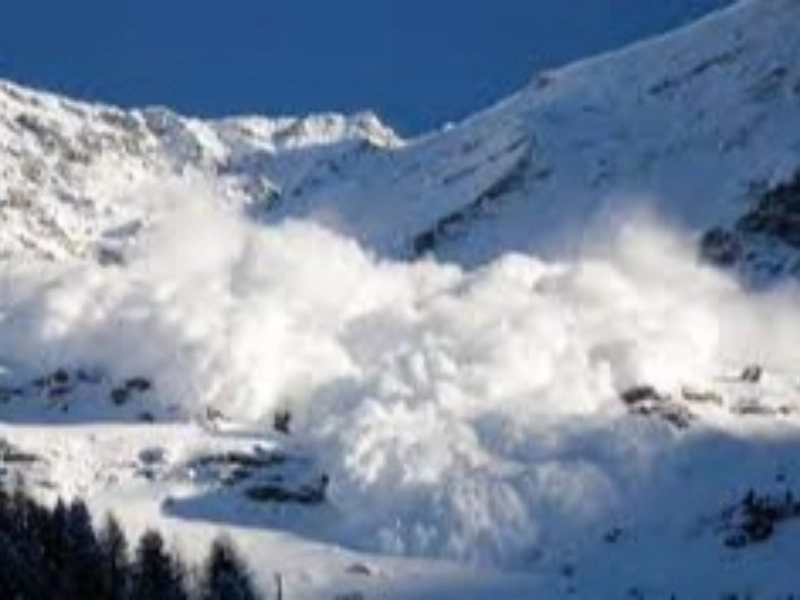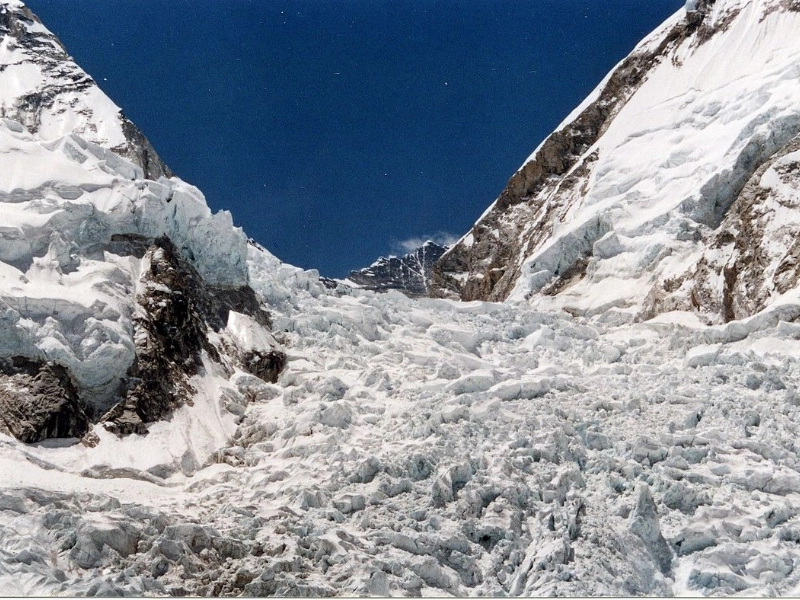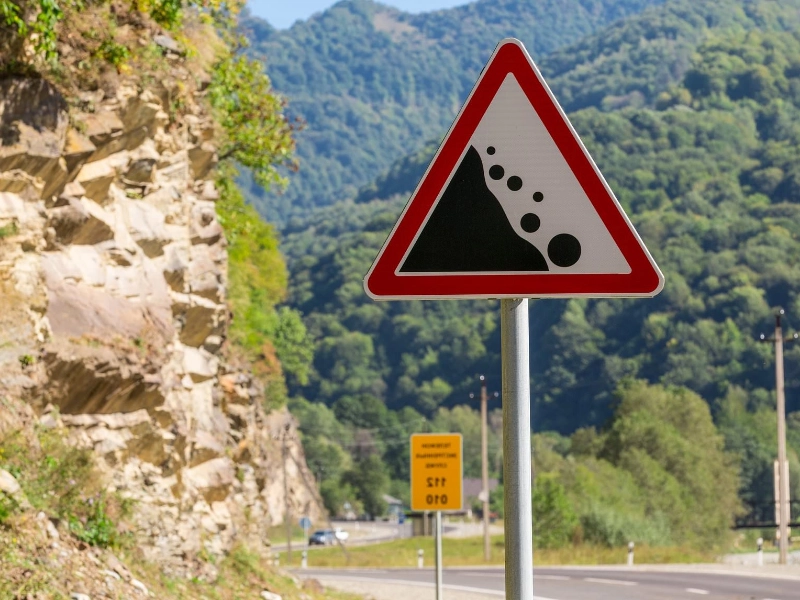Climbing mountains can be a risky activity. To climb securely, one must possess a great degree of ability and expertise. Avalanches are an example of an objective hazard over which one has no control. On the other hand, subjective risks are also avoidable. Stepping on slick or uneven surfaces is one of them.
 One frequent and lethal risk of mountaineering is rock falls. Many things, including as weather, climber falls, and erosion, might contribute to them.
Certain hazards are preventable, including staying out of couloirs and gullies. Nonetheless, utilizing the appropriate safety equipment and donning a helmet when climbing is the best defense against falling rocks.
The evaporation of water from rain or snow is another element that causes rockfalls. A rockfall may result from the rock expanding and cracking as a result of this. This is especially risky in the winter and spring, when avalanches are more likely to occur.
One frequent and lethal risk of mountaineering is rock falls. Many things, including as weather, climber falls, and erosion, might contribute to them.
Certain hazards are preventable, including staying out of couloirs and gullies. Nonetheless, utilizing the appropriate safety equipment and donning a helmet when climbing is the best defense against falling rocks.
The evaporation of water from rain or snow is another element that causes rockfalls. A rockfall may result from the rock expanding and cracking as a result of this. This is especially risky in the winter and spring, when avalanches are more likely to occur.
 Avalanches are among the deadliest dangers that mountaineers encounter. Climbers have no influence over them; the only way to lessen the risk is to avoid areas where avalanches are likely to occur.
The risk of an avalanche varies throughout the day and frequently hourly. It is dependent upon the slope's temperature gradient and the direction of the sun. Sun-exposed slopes warm up more quickly and are more likely to experience wet loose avalanches.
Shearing of the snow layers over the slope is the other component that lowers resistance and raises the possibility of an avalanche. Climbing, wind, rain, or a shift in the snowpack's temperature can all contribute to this. Because of this, it is challenging to forecast if a route will be safe.
Avalanches are among the deadliest dangers that mountaineers encounter. Climbers have no influence over them; the only way to lessen the risk is to avoid areas where avalanches are likely to occur.
The risk of an avalanche varies throughout the day and frequently hourly. It is dependent upon the slope's temperature gradient and the direction of the sun. Sun-exposed slopes warm up more quickly and are more likely to experience wet loose avalanches.
Shearing of the snow layers over the slope is the other component that lowers resistance and raises the possibility of an avalanche. Climbing, wind, rain, or a shift in the snowpack's temperature can all contribute to this. Because of this, it is challenging to forecast if a route will be safe.
 Deep fissures in glaciers and ice sheets are referred to as crevasses in mountaineering. They can trap climbers beneath them and generate avalanches of snow and ice, which makes them dangerous.
They originate from the glacier moving at varying speeds in different areas. En-echelon crevasses appear at an odd angle close to the glacier's edge, while longitudinal crevasses emerge parallel to the glacier axis. Because they are frequently hidden from climbers and covered in snow, these are particularly dangerous.
Mountaineers face a significant risk of falling because even a slight fall can be lethal. To prevent falling into crevasses, climbers need to be well-trained and utilize ropes and ice axes appropriately. To avoid dehydration, kids should also always have a enough supply of food and water on hand. Lastly, they should be aware of their limitations and never attempt to trail or compete with less skilled climbers.
Deep fissures in glaciers and ice sheets are referred to as crevasses in mountaineering. They can trap climbers beneath them and generate avalanches of snow and ice, which makes them dangerous.
They originate from the glacier moving at varying speeds in different areas. En-echelon crevasses appear at an odd angle close to the glacier's edge, while longitudinal crevasses emerge parallel to the glacier axis. Because they are frequently hidden from climbers and covered in snow, these are particularly dangerous.
Mountaineers face a significant risk of falling because even a slight fall can be lethal. To prevent falling into crevasses, climbers need to be well-trained and utilize ropes and ice axes appropriately. To avoid dehydration, kids should also always have a enough supply of food and water on hand. Lastly, they should be aware of their limitations and never attempt to trail or compete with less skilled climbers.
 A huge piece of ice crashes from the glacier, posing a potentially fatal risk to climbers. Ascending Mount Everest is not recommended for the faint of heart because of the meter-by-meter shifting icefall that can collapse at any time. Working from the ice, a group of seasoned climbers known as 'icefall doctors' set up ladders. These are entrusted with this risky work due to their technical expertise and prior experience.
The second greatest risk associated with mountaineering is injury, as it can be fatal. Even if they don't kill you, they can make getting to safety considerably more difficult. A first aid kit should always be carried by climbers, along with plenty of water (small sip intervals rather than a full bottle) and weather-appropriate apparel.
A huge piece of ice crashes from the glacier, posing a potentially fatal risk to climbers. Ascending Mount Everest is not recommended for the faint of heart because of the meter-by-meter shifting icefall that can collapse at any time. Working from the ice, a group of seasoned climbers known as 'icefall doctors' set up ladders. These are entrusted with this risky work due to their technical expertise and prior experience.
The second greatest risk associated with mountaineering is injury, as it can be fatal. Even if they don't kill you, they can make getting to safety considerably more difficult. A first aid kit should always be carried by climbers, along with plenty of water (small sip intervals rather than a full bottle) and weather-appropriate apparel.
 Pushing oneself too far in extreme high altitude mountaineering places is a regular way for individuals to perish. In addition to the inherent risks of rock falls, avalanches, and bad weather, climbers also run the risk of experiencing equipment malfunctions, exhaustion, or poor technique, which can result in falls.
A climber needs to be fully aware of these risks and have a strategy in place to handle them while ascending. A climber who is self-aware will be able to recognize the appropriate level of risk they are willing to take and be ready to act should they begin to experience the symptoms of altitude sickness. By being aware of both objective and subjective threats, a mountaineer can make better decisions. A climber should also always be accompanied by a mountaineer with experience.
Pushing oneself too far in extreme high altitude mountaineering places is a regular way for individuals to perish. In addition to the inherent risks of rock falls, avalanches, and bad weather, climbers also run the risk of experiencing equipment malfunctions, exhaustion, or poor technique, which can result in falls.
A climber needs to be fully aware of these risks and have a strategy in place to handle them while ascending. A climber who is self-aware will be able to recognize the appropriate level of risk they are willing to take and be ready to act should they begin to experience the symptoms of altitude sickness. By being aware of both objective and subjective threats, a mountaineer can make better decisions. A climber should also always be accompanied by a mountaineer with experience.